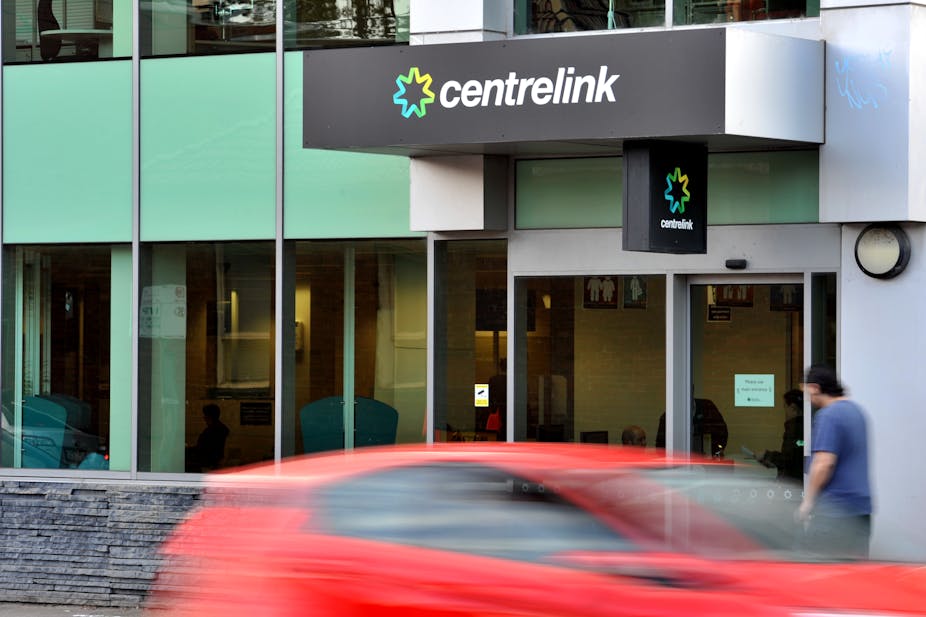In July, the federal government will begin a series of pilot programs for its work for the dole scheme across Australia. All job seekers aged 18 to 30 who have been unemployed for more than a year and have a work experience requirement will either participate in this program or have their income support payments reduced or stopped.
The program is controversial – for good reason. First, it probably won’t work. Instead, it is likely to harm the people it applies to. We can anticipate this because the Howard government experimented with work for the dole programs in the 1990s and early 2000s. In a 2004 study, University of Melbourne economists Jeff Borland and Yi-Ping Tseng found that participants in the old work for the dole scheme were less likely to exit unemployment payments.
In other words, the only real evidence we have about these work for the dole programs shows they are likely to cause harm to an arbitrarily targeted subset of the population. Australia already has one of the least generous unemployment benefits schemes in the OECD, with some of the strictest job search and monitoring requirements.
The crucial question is whether young people are actually the problem. If youth unemployment were truly a crisis, we would expect young people to make up a large proportion of the total unemployed in Australia. The graph below shows the trend in the proportion of the total unemployed in Australia aged 15-24 years old since 1978.

The proportion of unemployed persons aged 15-24 years is at one of the lowest levels in the past 30 years. However, some areas of Australia do have unusually high rates of youth unemployment. As a result, we would certainly expect the new work for the dole pilot programs to be targeted at these areas. The government’s justification for selecting the pilot regions was because:
… they represent a broad cross section of metropolitan and non-metropolitan locations with varying labour markets and typically have high rates of youth unemployment.
To explore this claim, I mapped the government’s work for the dole target areas to the Australian Electoral Commission’s boundaries and used Parliament House’s concordance table to overlay the youth unemployment statistics for small geographic areas published by the Australian Bureau of Statistics (ABS).
The regions targeted for work for the dole pilots correspond to 42 electorates scattered across Australia and the levels of youth unemployment are not unusually high in these areas. A simple random sample of 42 electorates yields an average youth unemployment rate approximately equal to the rate observed in work for the dole electorates.
This suggests the choice of work for the dole zones was not strongly related to the youth unemployment rate, a result also found by Borland and Tseng’s 2004 study for the rollouts under the Howard government.
So, was the choice of work for the dole regions related to electoral politics? If we assume parties are rational and seek to maximise their number of seats, it’s reasonable to assume they are less likely to implement controversial policies if the potential consequences include a loss of political support.
Such consequences will be acutely felt in marginal electorates, where the loss of political support can mean the loss of political power. If I was a Coalition MP in a marginal electorate I certainly wouldn’t want to justify one of these work for the dole programs to my constituents, given what we know about work for the dole’s effectiveness.
The graph below shows the predicted probabilities (solid lines) and 90% confidence intervals (bands) associated with receiving a work for the dole pilot (y-axis) as a function of youth unemployment (x-axis) for marginal (red) and non-marginal (blue) electorates.

The estimated probability of receiving a work for the dole pilot is much higher in non-marginal electorates, regardless of the level of actual youth unemployment. The estimated probability for marginal electorates with an average level of youth unemployment is approximately 5% and 30% for non-marginal electorates with the same level of youth unemployment.
This association likely reflects the political danger of delivering unpopular policies to electorates with political power. So why bother with the work for the dole scheme at all?
The work for the dole program, like many aspects of the May budget, can serve a valuable function for the increasingly radical conservative movement in Australia. The narrative that young people are enjoying a “social security endless summer” is an emotionally affective myth that puts youth in the “other” category.
It would probably be impossible to sustain the movement against welfare if the face of the “age of entitlement” was a grandmother collecting a pension or a poor young white family. “Earn or learn” is another rallying cry for the conservative base.

